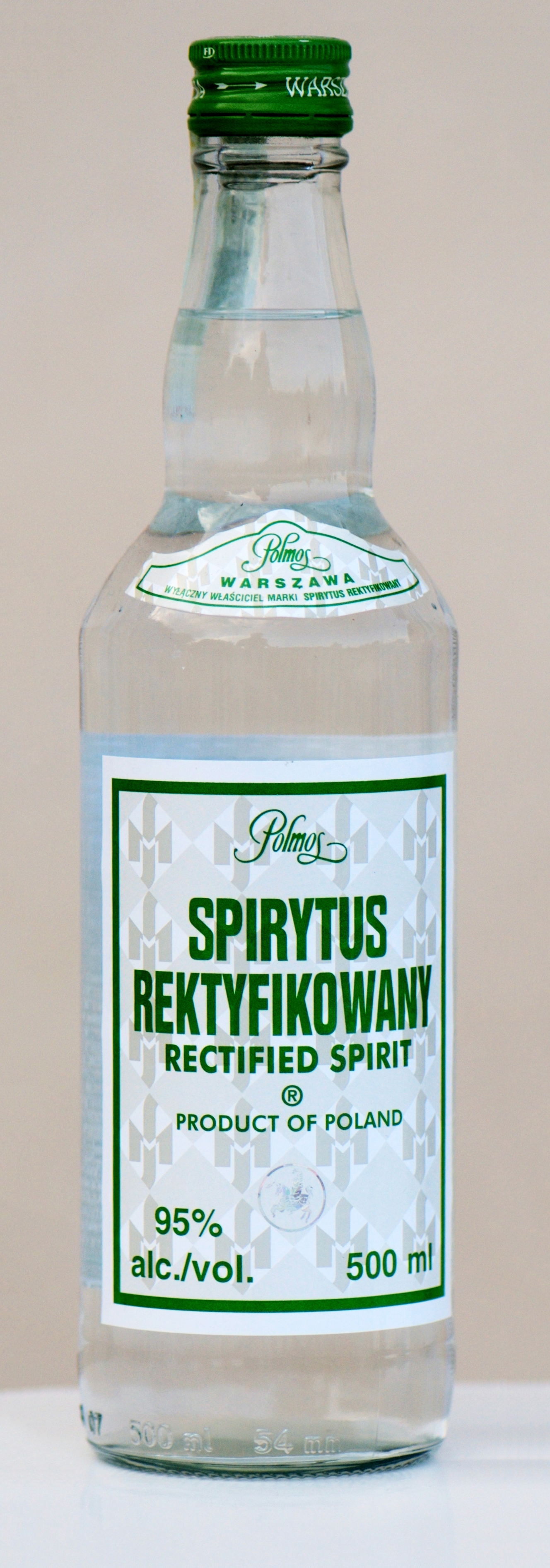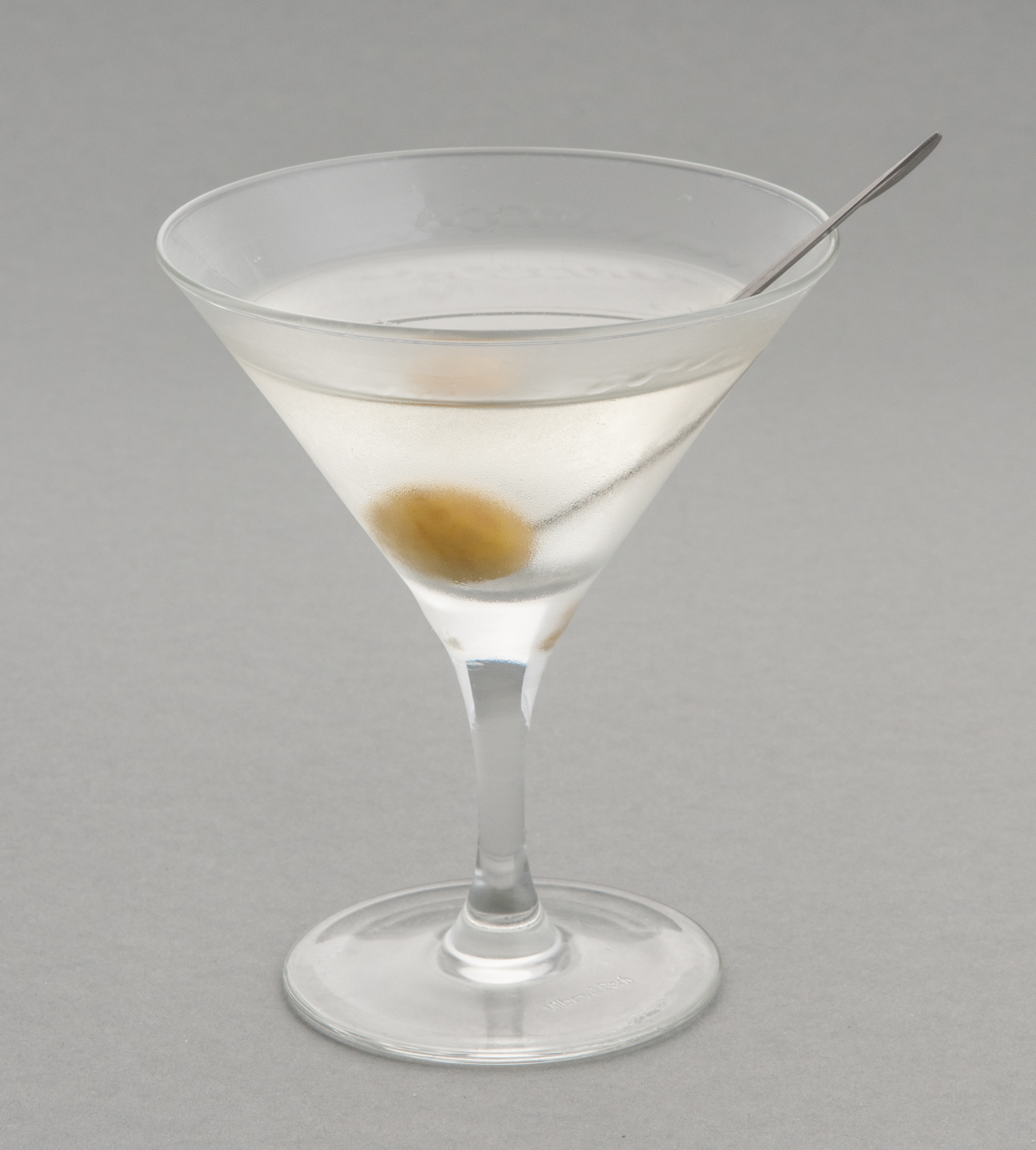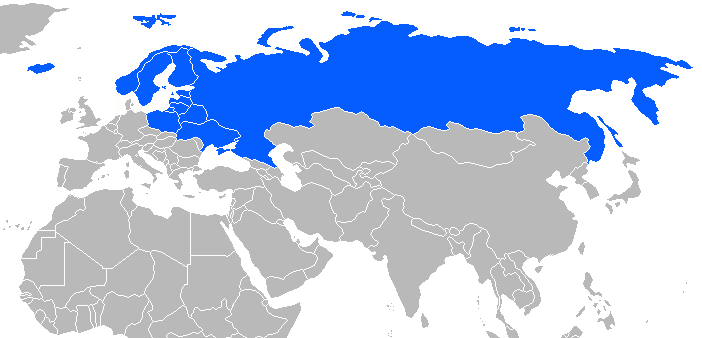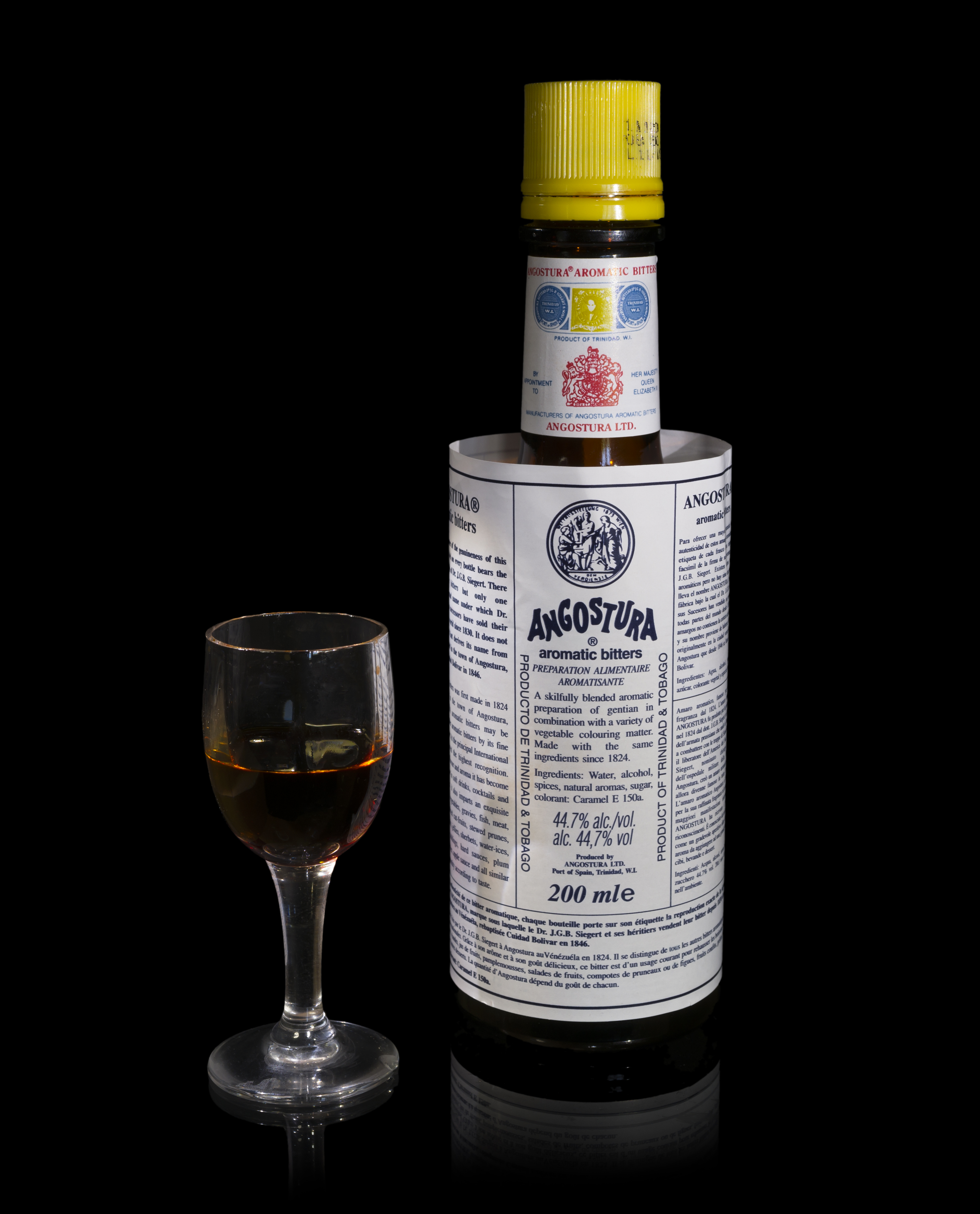|
Neutral Spirit
Rectified spirit, also known as neutral spirits, rectified alcohol or ethyl alcohol of agricultural origin, is highly concentrated ethanol that has been purified by means of repeated distillation in a process called rectification. In some countries, denatured alcohol or denatured rectified spirit may commonly be available as "rectified spirit", because in some countries (though not necessarily the same) the retail sale of rectified alcohol in its non-denatured form is prohibited. The purity of rectified spirit has a practical limit of 97.2% ABV (95.6% by mass) when produced using conventional distillation processes, as a mixture of ethanol and water becomes a minimum-boiling azeotrope at this concentration. However, rectified spirit is typically distilled in continuous multi-column stills at 96–96.5% ABV and diluted as necessary. Ethanol is a commonly used medical alcohol''spiritus fortis'' is a medical term for ethanol solutions with 95% ABV. Neutral spirits can be produced ... [...More Info...] [...Related Items...] OR: [Wikipedia] [Google] [Baidu] |
Pomace
Pomace ( ), or marc (; from French ''marc'' ), is the solid remains of grapes, olives, or other fruit after pressing (wine), pressing for juice or Vegetable oil, oil. It contains the skins, pulp, seeds, and stems of the fruit. Grape pomace has traditionally been used to produce pomace brandy (such as grappa, orujo, törkölypálinka, tsipouro, tsikoudia, zivania). Today, it is mostly used as fodder, as fertilizer, or for the extraction of bioactive compounds like polyphenols. Name The English language, English word ' derives from Medieval Latin ("cider") and ("pomaceous, appley"), from Classical Latin ("fruit, apple").. The word was originally used for cider and only later applied to the apple mash before or after pressing, via various cognate terms in northern French language, French dialects of French, dialects, before being used for such byproducts more generally. History The ancient Greeks and Ancient Romans, Romans used grape pomace to create an inferior class of ancie ... [...More Info...] [...Related Items...] OR: [Wikipedia] [Google] [Baidu] |
Solvent
A solvent (from the Latin language, Latin ''wikt:solvo#Latin, solvō'', "loosen, untie, solve") is a substance that dissolves a solute, resulting in a Solution (chemistry), solution. A solvent is usually a liquid but can also be a solid, a gas, or a supercritical fluid. Water is a solvent for Chemical polarity#Polarity of molecules, polar molecules, and the most common solvent used by living things; all the ions and proteins in a Cell (biology), cell are dissolved in water within the cell. Major uses of solvents are in paints, paint removers, inks, and dry cleaning. Specific uses for Organic compound, organic solvents are in dry cleaning (e.g. tetrachloroethylene); as paint thinners (toluene, turpentine); as nail polish removers and solvents of glue (acetone, methyl acetate, ethyl acetate); in spot removers (hexane, petrol ether); in detergents (D-limonene, citrus terpenes); and in perfumes (ethanol). Solvents find various applications in chemical, pharmaceutical, oil, and gas ... [...More Info...] [...Related Items...] OR: [Wikipedia] [Google] [Baidu] |
Crème De Cassis
Crème de cassis () (also known as cassis liqueur) is a sweet, dark red liqueur made from blackcurrants. Several cocktails are made with crème de cassis, notably the popular wine cocktail kir and its sparkling variant, the kir royal. Other cocktails that use it include the original tequila sunrise and the El Diabolo, a tequila buck. It may also be served as an after-dinner liqueur or as a frappé. Ingredients It is made from blackcurrants that are crushed and soaked in alcohol, with sugar subsequently added. The quality of crème de cassis depends upon the variety of fruit used, the content of the berries, and the production process. Origin and production The modern version of the beverage first appeared in 1841, when it displaced " ratafia de cassis", which had been produced in prior centuries. While crème de cassis is a specialty of Burgundy, it is also made in Anjou, England, Luxembourg, Alberta, Quebec, Vermont and Tasmania. In 1979, Germany attempted to rest ... [...More Info...] [...Related Items...] OR: [Wikipedia] [Google] [Baidu] |
Limoncello
Limoncello () is an Italian lemon liqueur mainly produced in southern Italy, especially in the regions around the Gulf of Naples, the Amalfi Coast, and Sicily. It is the second-most popular liqueur in Italy and is traditionally served chilled as an after-dinner digestif. It is also a popular homemade liqueur, with various recipes available online and in print. Limoncello is made from the zest of lemons and usually has a slightly turbid appearance, which originates from suspended small essential oil droplets. History The exact origin of limoncello is disputed. The industry trade group says that limoncello was created at the beginning of the 1900s by the grandmother of Maria Antonia Farace, who lived in a small guesthouse in Isola Azzurra. US sources say that it was either invented in Sicily about 100 years ago, or that it was first made on the Amalfi Coast, where several villages and islands claim to be its place of origin. Journalist Kristen Tillotson reports that it may eithe ... [...More Info...] [...Related Items...] OR: [Wikipedia] [Google] [Baidu] |
Cocktail
A cocktail is a mixed drink, usually alcoholic beverage, alcoholic. Most commonly, a cocktail is a combination of one or more liquor, spirits mixed with other ingredients, such as juices, flavored syrups, tonic water, Shrub (drink), shrubs, and bitters. Cocktails vary widely across regions of the world, and many websites publish both original recipes and their own interpretations of older and more famous cocktails. History A well-known 'cocktail' in ancient Greece was named kykeon. It is mentioned in the Homeric texts and was used in the Eleusinian Mysteries. 'Cocktail' accessories are exposed in the Museum of the Royal Tombs of Aigai (Vergina), Museum of the Royal Tombs of Aigai (Greece). They were used in the court of Philip II of Macedon to prepare and serve mixtures of wine, water, honey as well as extracts of aromatic herbs and flowers, during the banquets. In the United States, a written mention of 'cocktail' as a beverage appeared in ''The Farmers Cabinet,'' 1803. T ... [...More Info...] [...Related Items...] OR: [Wikipedia] [Google] [Baidu] |
Vodka
Vodka ( ; is a clear distilled beverage, distilled alcoholic beverage. Its varieties originated in Poland and Russia. Vodka is composed mainly of water and ethanol but sometimes with traces of impurities and flavourings. Traditionally, it is made by distilling liquid from Fermentation in food processing, fermented cereal, cereal grains and potatoes since the latter was introduced in Europe in the 18th century. Some modern brands use maize, Sugarcane, sugar cane, fruits, fruit, honey, and Maple syrup, maple sap as the base. Since the 1890s, standard vodkas have been 40% alcohol by volume (ABV) (80 U.S. proof). The European Union has established a minimum alcohol content of 37.5% for vodka. Vodka in the United States must have a minimum alcohol content of 40%. Vodka is traditionally drunk "Bartending terminology, neat" (not mixed with water, ice, or other Mixer drink, mixers), and it is often served freezer chilled in the Alcohol belts of Europe#Vodka belt, vodka belt of Belaru ... [...More Info...] [...Related Items...] OR: [Wikipedia] [Google] [Baidu] |
Jello Shot
A jello shot, Colloquialism, colloquially, or Jell-O shot, is a gelatin and Alcoholic drink, alcohol mixture consumed as a Shooter (drink), shot. The shot is commonly made with vodka or other Hard Liquor, hard liquors. Shots made with non-branded or unflavored gelatin rather than Jell-O are sometimes known as jelly shots or gelatin shots. Description A jello shot is made by adding an Alcoholic drink, alcoholic beverage to the gelatin mixture, complementing the water normally used to make gelatin. The shots are named after the popular Gelatin dessert, jelly brand Jell-O, although the term jello-shot has since become genericized. The shot is normally served in shot glasses, plastic cups, or ice-cube trays. Jell-O shots are commonly made with vodka but can be prepared using almost any type of hard liquor, grain alcohol, or wine. Fruit juices or flavored alcohol can be used in the shot to add extra flavor or mask the taste of alcohol. Proper proportioning of alcohol and water is ... [...More Info...] [...Related Items...] OR: [Wikipedia] [Google] [Baidu] |
Punch (drink)
The term punch refers to a wide assortment of drinks, both non-alcoholic and Alcoholic drink, alcoholic, generally containing fruits or Juice, fruit juice. The drink was introduced from the Indian subcontinent to Kingdom of England, England by employees of the East India Company in the late 17th century.Edwards, Graham and Sue. ''The Language of Drink'', Alan Sutton Publishing, 1988. Punch is usually served at Party, parties in large, wide bowls, known as ''punch bowls''. In the United States, federal regulations provide the word "punch" to describe commercial beverage products that do ''not'' contain fruit or fruit juice. The term is used to label artificially flavored beverages, with or without natural flavorings, which do not contain fruit juice or concentrate in significant proportions. Thus a product labeled as "fruit punch" may contain no fruit ingredients at all. Etymology The word is commonly said to come from Hindi language, Hindi पाँच (''pāñch''), meaning ... [...More Info...] [...Related Items...] OR: [Wikipedia] [Google] [Baidu] |
Bitters
A bitters (plural also ''bitters'') is traditionally an Alcoholic drink, alcoholic preparation flavored with botanical matter for a Bitterness (taste), bitter or bittersweet Flavoring, flavor. Originally, numerous longstanding brands of bitters were developed as patent medicines, but lately are sold as digestifs, sometimes with herbalism, herbal properties, and as cocktail flavorings. Since cocktails often contain sour and sweet flavors, bitters are used to engage another primary taste and thereby balance out the drink and make it more complex, giving it a more complete flavor profile. Ingredients The botanical ingredients used historically in preparing bitters have consisted of aromatic herbs, bark, roots, and/or fruit for their flavor and medicinal properties. Some of the more common ingredients are cascarilla, Cinnamomum aromaticum, cassia (Chinese cinnamon), gentian, Zest (ingredient), orange peel, and cinchona bark. Most bitters contain both water and ethanol, alcohol, th ... [...More Info...] [...Related Items...] OR: [Wikipedia] [Google] [Baidu] |
Liqueur
A liqueur ( , ; ) is an alcoholic drink composed of Liquor, spirits (often rectified spirit) and additional flavorings such as sugar, fruits, herbs, and spices. Often served with or after dessert, they are typically heavily sweetened and un-aged, beyond a resting period during production, when necessary, for their flavors to mingle. Liqueurs are historical descendants of herbal medicines. They were made in France as early as the 13th century, often prepared by monks (for example, Chartreuse (liqueur), Chartreuse). Today they are produced all over the world, commonly served neat, over ice, with coffee, in cocktails, and used in cooking. Etymology The French word ''liqueur'' is derived from the Latin ''liquifacere'', which means "to dissolve". In some parts of the United States and Canada, liqueurs may be referred to as cordials, or schnapps. This can cause confusion as in the United Kingdom a Squash (drink), cordial would refer to a non-alcoholic concentrated fruit syrup, typ ... [...More Info...] [...Related Items...] OR: [Wikipedia] [Google] [Baidu] |
Cut Brandy
Cut brandy is a liquor made of brandy, neutral grain spirit and water. Sometimes, sugar is used to soften taste. It is often colored with caramel color. Grades Most cut brandies are graded by the relative amount of brandy it contains. Grades are represented by stars. * 0 stars, almost no brandy at all, only some bringing color to the grain liquor. * 1 star, one-quarter (1/4) of brandy * 2 stars, half of brandy (seldom used) * 3 stars, three-quarters (3/4) of brandy Regional variants Finland The Finnish ''Jaloviina'' ("noble Brännvin", colloquially ''Jallu'') is a cut cognac with 38% (one star) or 40% (three stars) ABV. It has a strong taste and 4–7 grams of sugar per liter, depending on the grade. Special or vintage batches are also bottled, these may have slightly higher alcohol and sugar content. The brandy used for Jaloviina is cognac. Jaloviina Tammi is a limited-edition bottling to celebrate the Finnish independence. Because of the stars used to grade Jaloviina, diffe ... [...More Info...] [...Related Items...] OR: [Wikipedia] [Google] [Baidu] |









